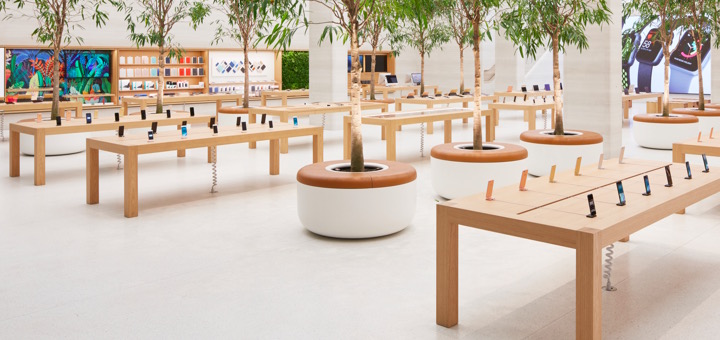Morgan Stanley shows why Apple-as-a-service is good business

A report last week speculated Apple may plan some form of subscription based Mac, iPhone and iPad service, similar to (but different than) the iPhone upgrade scheme. Morgan Stanley MD research analyst Katy Huberty thinks the scheme could work. I’ve anticipated something like this for years. Here’s some of what she said.
What is Apple planning?
A report on Bloomberg speculated Apple would introduce its subscription based service perhaps as soon as this year/early in 2023.
The idea of the plan is that a customer would pay a regularly monthly fee to have the Apple product they need, returning it at the end of the subscription period.
For Apple, this takes the company’s one billion users into a recurring sales income, rather than remaining a primarily transactional play. It also dovetails well with Apple’s strategy to boost services adoption.
While she doesn’t say she thinks it will happen, Huberty does believe there are some good reasons for Apple to pursue the path. Noting that the company already has a billion users on its platform, she suggests that making such a move would drive Apple’s profit up. She recognises the power of the brand.
Here are her reasons why she thinks this:
We already spend a dollar a day
The average Apple user pays $1 per day for their hardware and services. “Their willingness to pay for the technology platform that controls their life is likely much higher,” Huberty says.
The analyst points out that at present the average user spends $280 each year on Apple hardware and an additional $69 on services.
“Compare that with your average daily coffee, lunch or transportation bill, and it’s easy to see how the ceiling on Apple daily spend per user is well ahead of current trends given 1) the importance of the Apple technology platform to user’s everyday lives, 2) high user engagement rates for Apple products and services, 3) industry leading loyalty rates, and 4) the optionality of integration with future product launches in adjacent markets like AR/VR, home, payments, health and autos. We are confident that the average Apple user’s willingness to pay for access to their Apple devices and services is meaningfully higher than $1/day or $30/month.”

Think different+
Huberty observes the popularity of the iPhone Upgrade Program. She also notes that a subscription-based service will work differently as it has no finite payment period. You pay a fee in perpetuity.
This also means Apple has an opportunity to offer a range of different subscriptions for the service, enabling the company to offer Apple One Plus on different tiers. She makes up a few examples, including the following:
- New iPhone every 24 months as entry level product.
- New iPhone every 12 months plus one, two or three additional hardware offerings
- Highest end scheme might give you a new iPhone yearly, unlimited Apple hardware offerings.
Each of these offers could be supplemented with Apple One or Apple Care.
“While there are a multitude of different bundles Apple can ultimately create with a subscription offering, the introduction of pricing tiers – as opposed to one flat subscription rate – that would allow Apple to capture each user’s greatest willingness to pay based upon their consumption of Apple products and services.”

A better business
“A common concern among investors is that hardware replacement cycles create cyclicality in businesses as customers choose not to purchase a new product each year. Apple’s expanding platform of hardware and services already helps to protect against this cyclicality, but we believe that the launch of an Apple subscription offering would reduce replacement cycles, as users would be incentivized to upgrade their device more often than they currently do. The reduction of hardware replacement cycles inherently puts upward pressure on spend per user, a win/win for both Apple and its users.”
Boosting direct sales
A subscription offering could shift more customers to a direct-to-consumer model, Huberty says.
The analyst cites IDC data that shows around 15% of iPhone shipments, 30% of Mac/iPads, and 20-25% of Wearables (AirPods and Apple Watch) are sold directly throughApple retail (online, in person).
Introducing a pure subscription model may shift more business to direct sales (B2C), which may eliminate retail margins, giving the company more revenue.
Growing Apple’s media services
Huberty believes that pairing a hardware subscription alongside an Apple One-type bundle will help to increase adoption of Apple’s first-party services, such as Music, iCloud and so on.
This would both drive services growth but would also help reduce the company’s dependence on App Store sales, which currently contribute around 30% of Apple’s services revenue. And, of course, a switch to propel sales of its own services also means the company can take a bigger chunk of sales revenue.
“Through the end of CY21, Apple users had 785M paid subscriptions across Apple’s first- and third-party services, up 27% Q/Q and 118% since December 2018,” the analyst says.
Up next?
Watch Apple’s moves from this point on.
If it seeks to launch a service of this kind, it will need to partner with third party financial firms to underwrite some of the risk of the plan.
It will also seek to work with third parties such as Brightstar to resell traded-in devices.
The company’s recent purchase of Credit Kudos may also have a bearing on how Apple chooses to manage credit risk in this plan.
“Apple recently acquired UK-based start-up Credit Kudos, which develops software to “make more informed credit checks on loan applications” using consumers banking data. One can see how this software could be crucial for Apple to properly evaluate its customers’ credit risk in a pure subscription model,” the analyst said.
Please follow me on Twitter, or join me in the AppleHolic’s bar & grill and Apple Discussions groups on MeWe.




